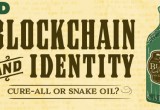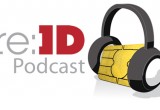Swiss Federal Railway tests blockchain Identity system for rail workers
26 November, 2018
category: Digital ID, Transit
The Swiss Federal Railway implemented a blockchain identity system that let railway track repair workers verify their credentials via certificates held on mobile devices. Train accidents are often linked back to improper track maintenance, and the Swiss government has developed regulations requiring recording of who worked on tracks and if they were certified to do so.
A log entry or exit is created when the employee scans a QR code at the site using the uPort app on his mobile device. The entry is hashed and stored on the tamper-proof blockchain.
This record keeping can be challenging as there are many companies with varied certifications working on thousands of construction projects at any given time. This situation led railway officials to conclude that a decentralized blockchain identity system could be an ideal fit. They worked with Linum Labs to develop the new solution.
At each construction site workers from different companies must prove that they are certified to perform a given task, such as welding. Site managers must record which workers did each task and that each was certified to do so.
The blockchain identity system is ideal because workers can carry their identity and certifications from one company to another and it is easy for site managers to verify.
The railway required a solution that:
- verified the identity of a worker,
- verified their credentials,
- recorded this in a tamper-proof ledger.
Using an application called uPort, railway workers, certification authorities and supervisors are given unique digital identities that are anchored to an identity on an Etherium blockchain. A hash of each worker’s time clock activities is published to the blockchain for auditing.
The blockchain identity system user flow
After downloading the uPort mobile app for iOS or Android, the railway worker registers his uPort ID on the Ethereum blockchain. He is issued a certificate by the railway education group attesting to his certifications. In the field, the certificate is verified by a supervisor on a railway construction site using a mobile time clock system that both verifies the credential and clocks time spent on the project.
A log entry or exit is created when the employee scans a QR code at the site using the uPort app on his mobile device. The entry is hashed and stored on the tamper-proof blockchain.
In this way, the employee proves his eligibility to work on the site, his certification to perform specific tasks and securely logs his time for site management and regulatory compliance.




